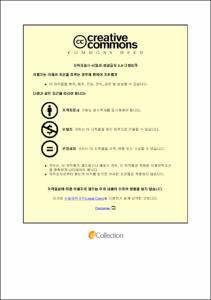Zooplankton community of Ross Sea, Antarctic Ocean in Austral summer
- Alternative Title
- 남반구 여름철 남극해 로스해의 동물플랑크톤 군집
- Abstract
- The pattern of zooplankton community is influenced by the hydrographic conditions of where they exist. Zooplankton community was investigated at 14 stations in the ice shelf of Ross Sea in Antarctic Ocean in January 2019. Zooplankton were collected by using a Ring Net (1 m diameter with 330 μm mesh) and Bongo Net (0.6 m diameter with 505 μm mesh) from near the bottom to the surface. Water temperature, salinity, and Chl-a concentration were simultaneously measured at all sampling stations. Sea surface temperature ranged from -0.15°C to 0.12°C and bottom temperature ranged from -1.88°C to 0.87°C. Salinity ranged from 33.9 to 34.7 psu and Chl-a concentration between sampling stations ranges from 0.31 to 1.58 mg.m-3. A total of 138 taxa belonging to 7 phyla were identified during the study period. Mean densities ranged from 130 inds.m-3 to 2,167 ind.m-3. Among taxa, copepods were dominated, comprising 36% of zooplankton density. Calanus propinquus, Calanus spp. copepodites, Metridia spp. copepodites, Metridia gerlachei, Eucalanidae spp. copepodites, Oithona spp. copepodite, Muggiacea spp., Conchoecia spp., Gammaridae spp. juvenile, and Euphausia superba were dominant species. This study indicated that there was no significant relationship between dominant species density, sea surface temperature, salinity, and Chl-a concentration.
Keywords: Zooplankton, density, hydrography, Ross Sea, Antarctic Ocean
- Issued Date
- 2021
- Awarded Date
- 2021. 2
- Type
- Dissertation
- Keyword
- Marine Biology
- Publisher
- 부경대학교
- Affiliation
- Pukyong National University, Graduate school
- Department
- 대학원 해양생물학과
- Advisor
- Won Gyu Park
- Table Of Contents
- 1. Introduction 1
2. Materials and methods 3
2.1. Sample site and methods: 3
2.2. Analysis of samples: 5
2.3. Data analysis 6
3. Results 7
3.1. Environmental conditions: 7
3.2. Zooplankton community: 11
3.3. Multivariate analysis: 13
3.4. Distribution of dominant taxa: 17
3.5. Distribution of zooplankton densities: 21
3.6. Correlation between environmental parameter and zooplankton: 22
4. Discussion 23
5. References 27
Acknowledgement 35
- Degree
- Master
- Files in This Item:
-
-
Download
 Zooplankton community of Ross Sea, Antarctic Ocean in Austral summer.pdf
기타 데이터 / 1.35 MB / Adobe PDF
Zooplankton community of Ross Sea, Antarctic Ocean in Austral summer.pdf
기타 데이터 / 1.35 MB / Adobe PDF
-
Items in Repository are protected by copyright, with all rights reserved, unless otherwise indicated.